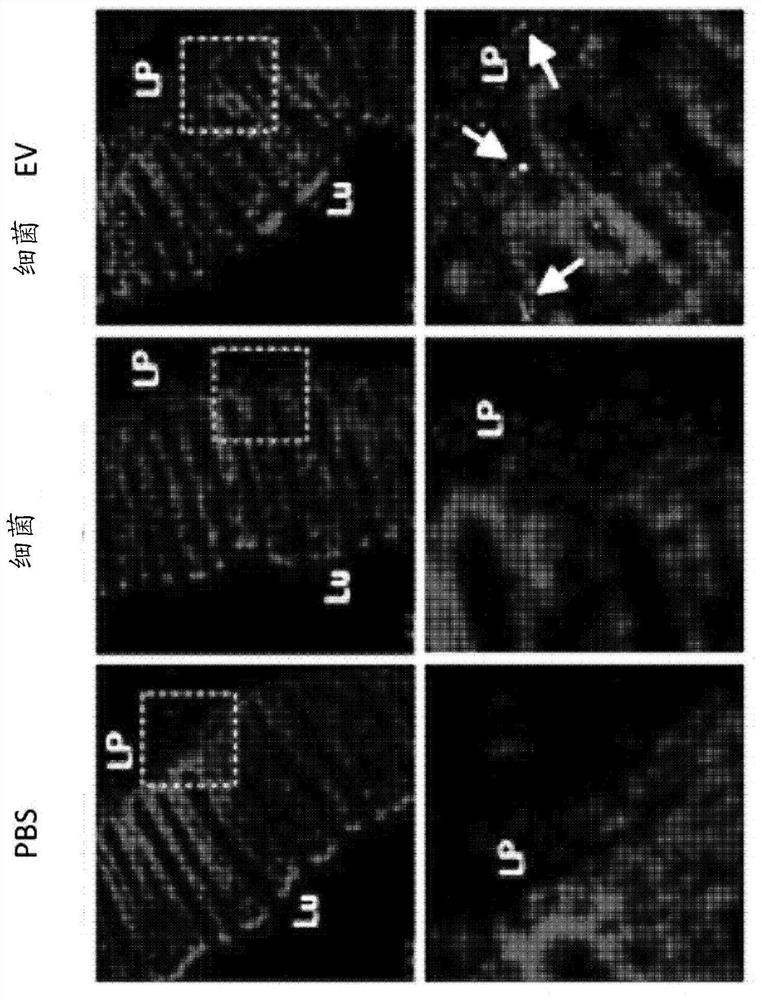Nanovesicles derived from bacteria of genus deinococcus, and use thereof
A deinococcus, vesicle technology, used in the prevention, composition of inflammatory diseases or neurological diseases, alleviation or treatment of cancer, can solve the problems of diagnosis and treatment of vesicles without Deinococcus bacteria, and achieves Injury-suppressing effect
- Summary
- Abstract
- Description
- Claims
- Application Information
AI Technical Summary
Problems solved by technology
Method used
Image
Examples
Embodiment 9
[0095] Hereinafter, preferred embodiments to facilitate understanding of the present invention will be presented. However, the following examples are provided only for easier understanding of the present invention, and the content of the present invention is not limited by the following examples.
Embodiment 1
[0097] Example 1. Analysis of in vivo absorption, distribution and excretion patterns of bacteria and vesicles derived from bacteria
[0098]To assess whether bacteria and bacteria-derived vesicles are absorbed systemically through the gastrointestinal tract, the following experiments were performed. First, a dose of 50 μg of each of fluorescently labeled bacteria and bacteria-derived vesicles was gastrointestinally administered to the stomach of mice, and the Fluorescence was then measured. As a result of observing the whole image of the mouse, as Figure 1A As shown, the bacteria were not absorbed systemically, but vesicles derived from the bacteria were absorbed systemically at 5 minutes after administration, and strong fluorescence was observed in the bladder 3 hours after administration, making it possible to see that the vesicles were excreted into the urine road. Furthermore, it can be seen that the vesicles are present in vivo until 12 hours after administration (s...
Embodiment 2
[0100] Example 2. Evaluation of whether bacteria and vesicles derived from bacteria penetrate the protective membrane of the intestinal mucosa
[0101] To assess whether bacteria and bacteria-derived vesicles that penetrate the protective membrane of the mucosa infiltrate into tissues after direct administration of bacteria and bacteria-derived vesicles to the intestine, the transmucosal Infiltration into the intestinal tissue behind the protective membrane. To assess the presence of bacteria and vesicles in mucosal tissues, antibodies against bacteria and vesicles were prepared, attached to green fluorescent protein (GFP) and used, and in combination with 4,6-diamidino-2-phenylindole ( DAPI) staining and observed under a microscope.
[0102] As a result, it was confirmed that bacteria cannot penetrate the protective membrane of the mucosa, however, vesicles derived from bacteria infiltrate into the intestinal tissue through the mucosa (see figure 2 ).
PUM
 Login to View More
Login to View More Abstract
Description
Claims
Application Information
 Login to View More
Login to View More - R&D
- Intellectual Property
- Life Sciences
- Materials
- Tech Scout
- Unparalleled Data Quality
- Higher Quality Content
- 60% Fewer Hallucinations
Browse by: Latest US Patents, China's latest patents, Technical Efficacy Thesaurus, Application Domain, Technology Topic, Popular Technical Reports.
© 2025 PatSnap. All rights reserved.Legal|Privacy policy|Modern Slavery Act Transparency Statement|Sitemap|About US| Contact US: help@patsnap.com



